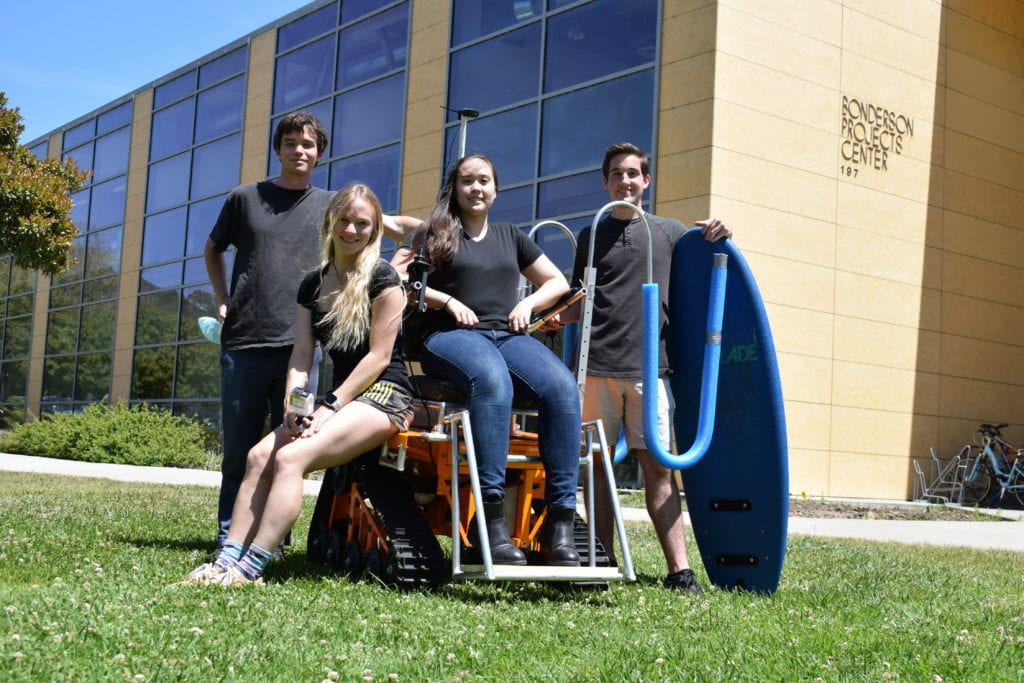the waverollers
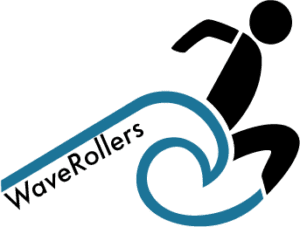

Lauren Knott
project manager
Industrial Engineer

Josh Simpson
electronics & software lead
Electrical Engineer

Caitlin Tang-Hornbuckle
Manufacturing & CAD Lead
Materials Engineer

Seth Yakel
Technical Lead
Mechanical Engineer
special thanks to action manufacturing

Thank you to Action Manufacturing Inc. for partnering with us and generously donating an Action Trackbot RX-3 to this project!
Our Project's Videos
Our Project's Digital Poster
Project Objective
The goal of our project is to design and manufacture a self-propelling beach wheelchair that adaptive surfers can use to independently travel to and from the beach to surf.
Background
AmpSurf
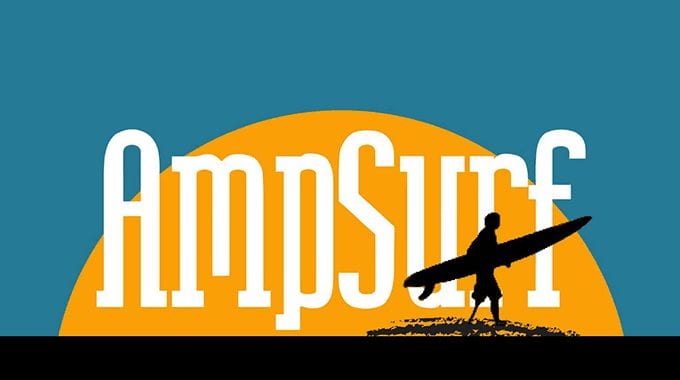
- AmpSurf (Association of Amputee Surfers), a national program based out of Pismo Beach, is an organization that aims to bring the healing power of the ocean to people with disabilities through adaptive surf therapy.
Adaptive surfing
- According to the National Center on Birth Defects and Developmental Disabilities, 61 million adults in the United States are currently living with a disability.
- Adaptive surfing was introduced in the mid-20th century as a rehabilitative method for injured war veterans. To date, adaptive surfing has taken the form of community-based programs focused on wellness, fitness, and development rather than illness and impairment.
Requirements & Testing

Conceptual Design
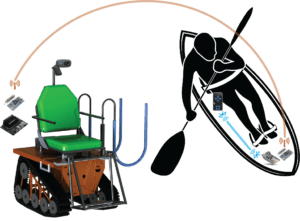
Electronics
Using an app on their smart device, the surfer is able to control the wheelchair remotely from the water while they are surfing. An arrow pad allows for minor positional adjustments and a number pad allows the user to stop, park, or recall the chair to their location with autonomous functionality.
All communications are sent via Bluetooth to the surfboard relay, which acts as a long-range transmitter for the user’s input. This relay is mounted in a waterproof Go-Pro case attached to the surfboard. The user’s input is sent via 915MHz LoRa to the wheelchair
On the wheelchair’s end, an Nvidia Jetson Nano uses its own RF transmitter to receive commands from the surfboard relay to cycle through various movement states in response. The wheelchair is also equipped with a camera capable used for object recognition to avoid hitting people while being operated remotely.
Manufacturing
The main subsystems of the chair were manufactured in on-campus and can be seen in the table below. Since the wheelchair is exposed to the saltwater environment of the ocean and beach, all materials must be corrosion resistant. 6061-T6 aluminum and 316L stainless steel were chosen because they are corrosion resistant, affordable, and we were able to manufacture with them on campus. All electronics are placed in commercial off-the-shelf (COTS) waterproof containers sealed with a 3M marine-grade sealant.
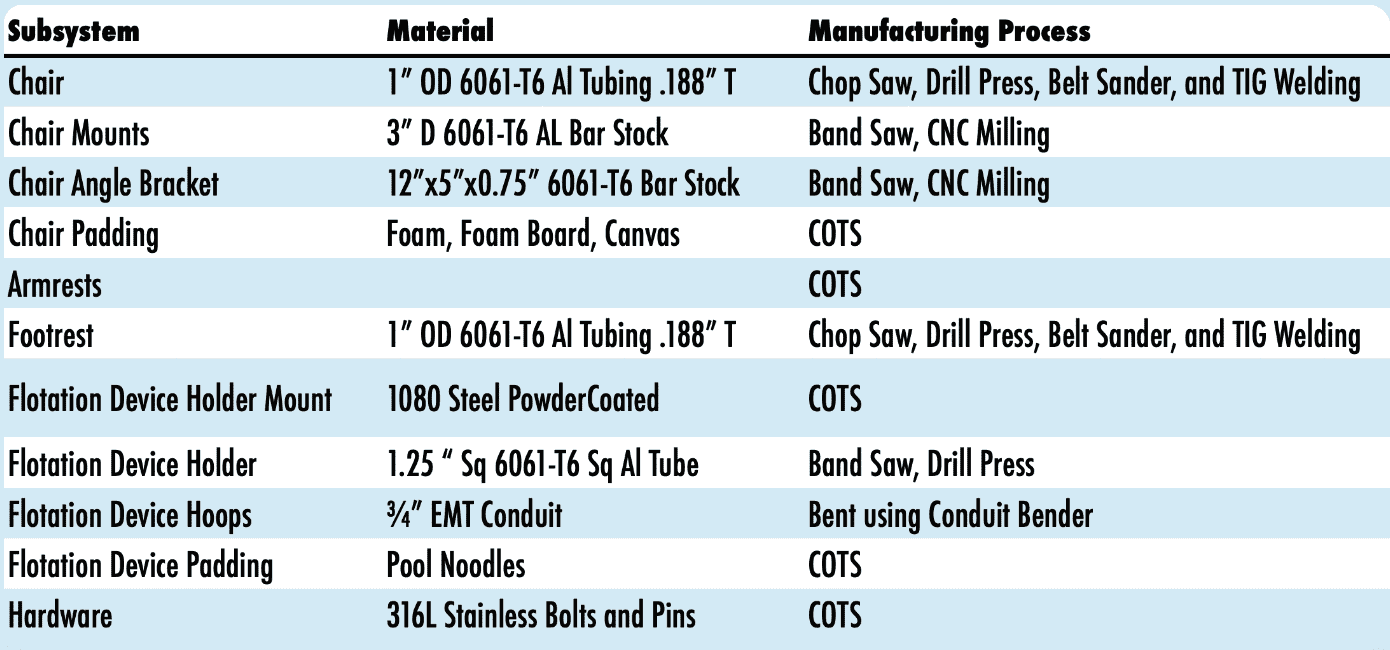
Results & Recommendations
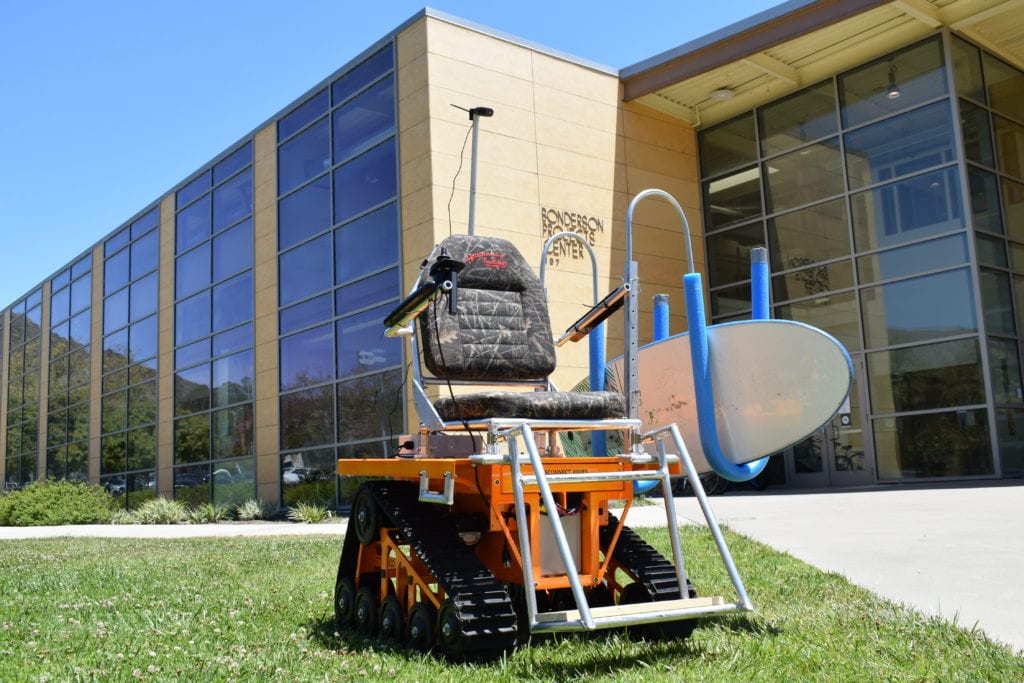
This project completed the assembly of an all-terrain wheelchair capable of transporting adaptive surfers and their boards independently in and out of the ocean. Given a signal received from the adaptive surfer’s smart device, this chair is capable of traveling in a set direction for a specific amount of time and will stop when people move in front of its camera’s view.
Further steps include:
- Developing an app that allows the user to control the chair with an Apple Watch
- testing and expanding computer vision capabilities
- acquiring waterproof bearings for the track system
- incorporating GPS functionality to allow the chair to travel to specific locations
- implementing navigational capabilities as a part of the autonomous functionality

